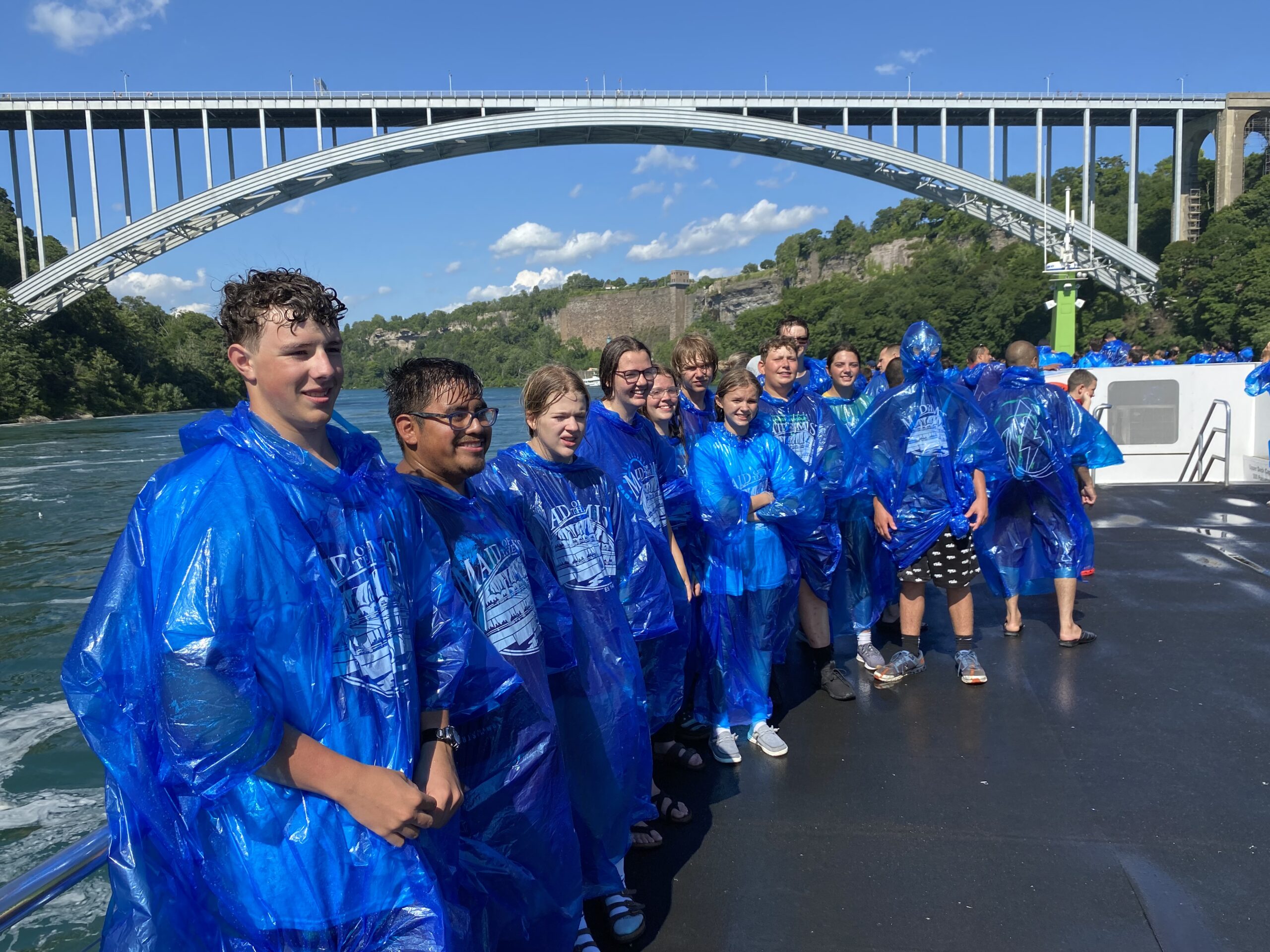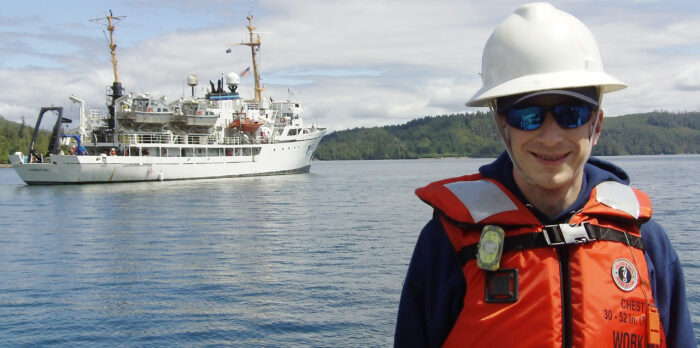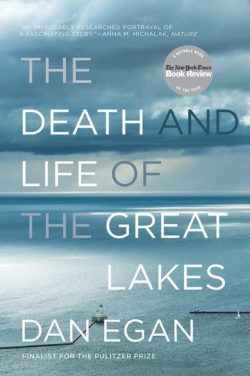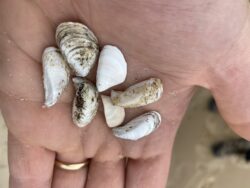
Spencer Cody’s Extraordinary Explorations

Despite living in South Dakota, as far away from any coast as one can get in North America, Spencer Cody (NOAA TAS 2014 & 2016) continues to bring the ocean to his students, and his students to the ocean. And he’s been busy lately.
You might remember Spencer from our video of his epic field trip where he drove his students from South Dakota to Mississippi in a school bus. Well, Spencer is still on the move! Through a NOAA Planet Stewards grant, a Diversity, Equity, Inclusion, and Accessibility Ocean Exploration Education (now known as Ocean Odyssey) grant, and an extended investigation of a TASAA Book Club subject, Spencer shares his love for marine environments with his students and fellow teachers in South Dakota and beyond.
We managed to catch Spencer at a rare quiet moment to learn more about how he translated a TASAA Book Club reading into a statewide project on invasive species, carried out by students and teachers. Read what Spencer shared with us below.
Where it all began:
In early 2021, I participated in a TASAA Book Club reading of The Death and Life of the Great Lakes by Dan Egan. The book brought up so many topics that were directly pertinent to South Dakota’s on-going fight against aquatic invasive species that I thought implementing this book study in my classroom and with other teachers across the state would be very impactful.
[Editor’s Note: The TASAA Book Club finished a reading of The Secret Life of Lobsters, by Trevor Corson, in June. Stay tuned for the next TASAA Book Club in the Fall, when we’ll be reading Gotham Unbound: The Ecological History of Greater New York, by Ted Steinberg.]
Project Implementation and Timeline:
The project was implemented in the classroom starting in January of 2022. Students across grades 6-12 started to read the book and attended discussion sessions on each chapter after school. The teacher version of this book study started two months later in virtual sessions held every two weeks.
Project Design:
The project had in-class, virtual, and field experience components. Students in grades 6-12 participated in the book study and discussion sessions. Discussion questions and slides related the book’s topics to aquatic invasive species local to South Dakota. Students also participated in zebra mussel surveys of local lakes, boat inspections, aquatic invasive species (AIS) removal, and a whole host of educational programming designed to limit the spread of aquatic invasive species. Similar programming was implemented for the teacher book study. However, teachers were encouraged to implement aquatic invasive species education components in their respective classrooms.
Thanks to funding from a NOAA Planet Stewards grant, students who successfully completed the book study and aquatic invasive training were able to participate in an aquatic invasive species field experience throughout the Great Lakes in July, 2022. During the field experience, participants visited many of the sites mentioned in the book, including Duluth Harbor and Aquarium, Beaver Island in Lake Michigan, Niagara Falls, Erie Canal, the Chicago River, and Shedd Aquarium, all while learning about aquatic invasive species and the commonalities between the Great Lakes and South Dakota’s fight against them. While students were on the field experience, teachers from the teacher-version of the book study followed along, responding to questions that students posted online to provide a rich discussion on the topic.

Great Lakes Aquarium
Edmunds Central students visit the aquarium in Duluth, Minnesota, to learn about Great Lakes ecology and how aquatic invasive species have impacted endemic species. The Great Lakes Aquarium specializes in freshwater exhibits and is one of the premiere aquariums in this field.
Central Michigan University Biological Station
View from inside the field station. Students visited the CMU Biological Station to learn more about Lake Michigan and how aquatic invasive species have impacted local ecology.
Great Lakes Field Trip
Research Vessel on Beaver Island
Aboard a research vessel stationed at the CMU Biological Station on Beaver Island in Lake Michigan. CMU uses research vessels to monitor Lake Michigan ecology and to retrieve specimens and measurements for the biological station labs.
View from the ferry to Beaver Island
On the way from Charlevoix, Michigan, out to Beaver Island.
View from inside Fort Mackinac
Once a military outpost, Fort Mackinac now serves as the headquarters for Mackinac National Park. The view looks out onto Mackinac Island.
Mackinac Island Ferry
Students take the ferry out to Mackinac Island in Lake Huron to learn about the development and use of the Great Lakes over time. Indigenous inhabitants lived on the island at least several hundred years before European colonization. The island eventually became important for the French fur trade in the region.
Ever wondered what it’s like to…
…pass through the Erie Canal locks?
…take a boat ride to Niagara Falls?
Project Outcomes:
In total, 82 students in grades 6-12 logged 297 stewardship and project involvement hours in a wide variety of stewardship activities involving preventative measures to reduce the spread of aquatic invasive species. Activities included inspections of boats, bait buckets, docks, as well as boat cleanings.
These stewardship activities contributed to marked shifts in student views and understanding. Teacher involvement included 26 teachers in our aquatic invasive book study with 22 teachers completing the course for graduate credit through the University of Sioux Falls. Additionally, 17 of these teachers participated in our summer virtual field experience with another 7 of them taking it for credit.

Ocean Odyssey Grant
(previously called Diversity, Equity, Inclusion and Accessibility Ocean Exploration Education Grant)
In 2022, Spencer was the recipient of an Ocean Exploration Education Grant to Advance Diversity, Equity, and Inclusion, funded by NOAA Ocean Exploration and the National Marine Sanctuary Foundation.
According to grant administrator Elizabeth Hoadley, “Spencer was truly a model grantee. The initial goal of the grant was to reach teachers like Spencer, but we have actually had mostly education programs (run by Universities and NGOs) apply. So we were very happy to fund his exciting project – another epic road trip from South Dakota to the coast! He just blew it out of the park as far as we’re concerned, making sure teachers received college credits, saw a wide variety of ocean careers and ecosystems while at the coast, and collected pre/post test data on student impacts from students in the classes of each of the teachers. He coordinated a blog for the Foundation website that tells the story about the road trip portion with lots of photos.”
This road trip to Monterey Bay National Marine Sanctuary and Channel Islands National Marine Sanctuary included stops at tidepools, museums, Monterey Bay Aquarium, a whale watching cruise and several boat trips (see videos above).
When we asked Spencer what advice he’d give other teachers who’d like to expand the four walls of their classrooms and create innovative experiences for their students and colleagues, Spencer said, “Be a part of programs like NOAA TAS and its alumni programming. They are a source of an infinite number of ideas through remarkable inspiration.”
With that, we’d like to encourage you to apply for the Ocean Odyssey grant! Applications are due August 15, 2023.
[Image and video credits: Spencer Cody]
